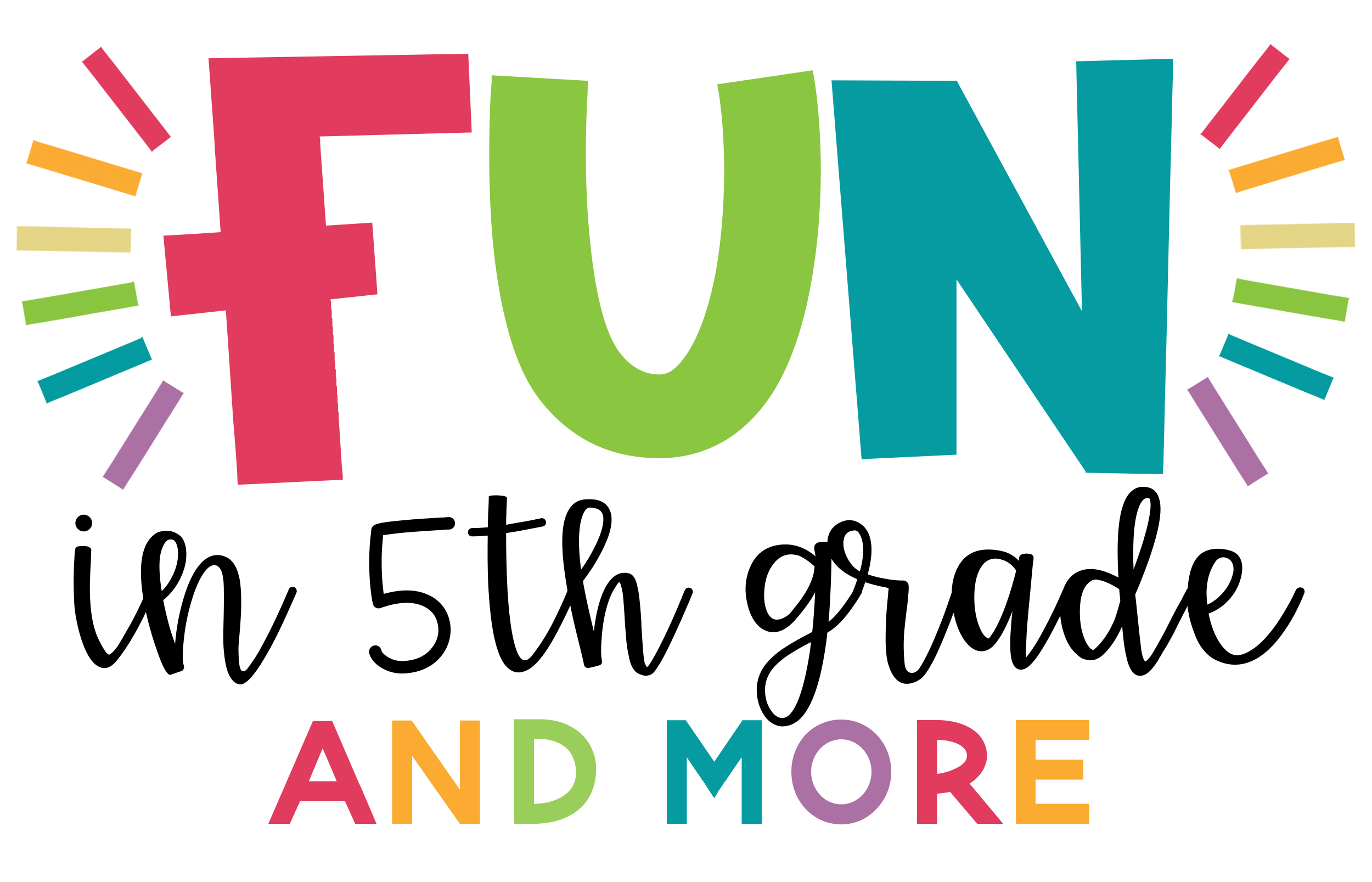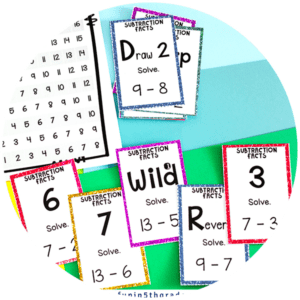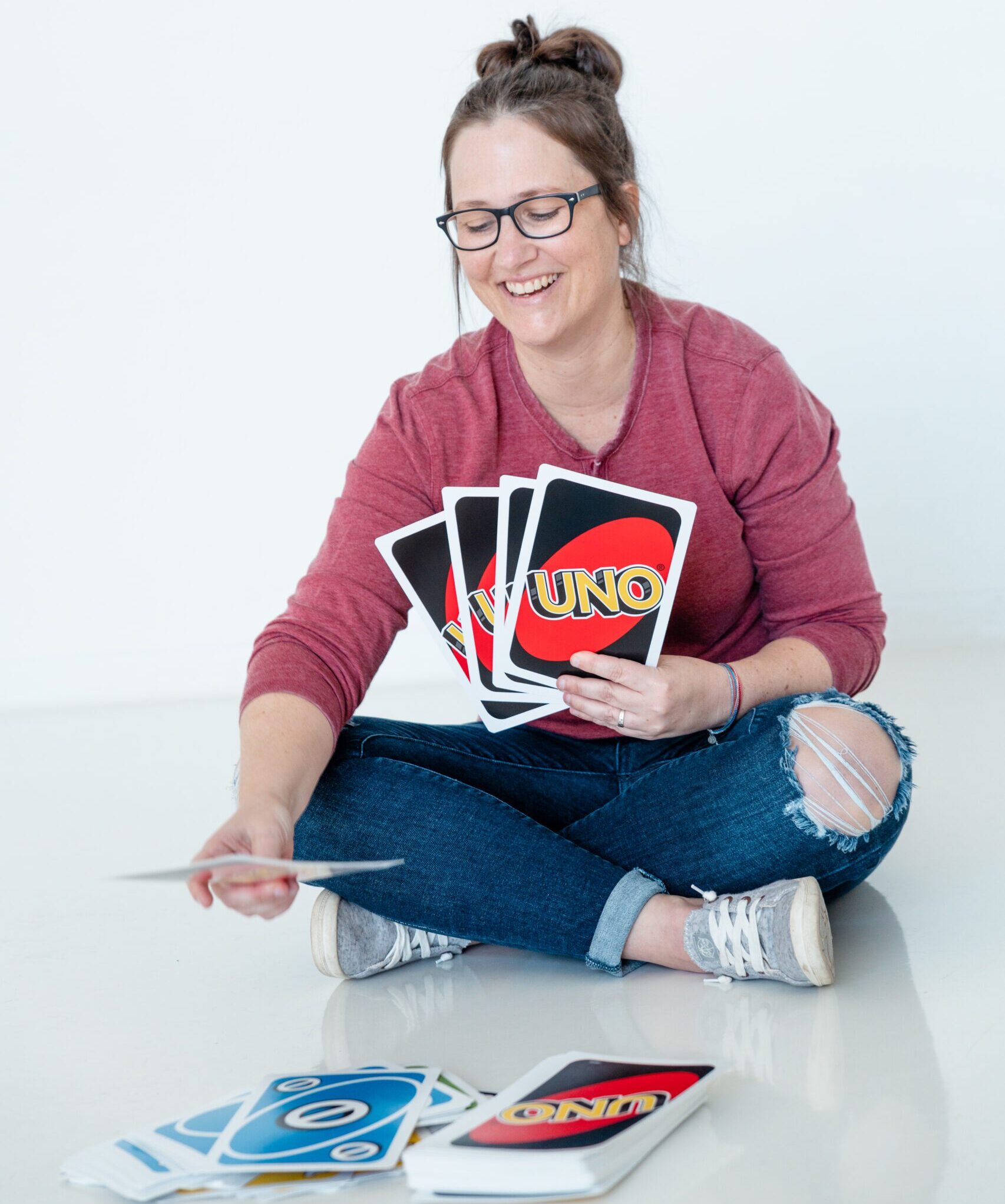Close reading is a strategy where students read a passage multiple times to understand the text more deeply. When I first attacked close reading with my students, there was a lot of complaining. They didn’t understand why they had to read a passage more than once, and I didn’t exactly know what I was doing. It was boring… for them and me. That’s when I decided to research close reading and made some modifications to make it more enjoyable for us all.
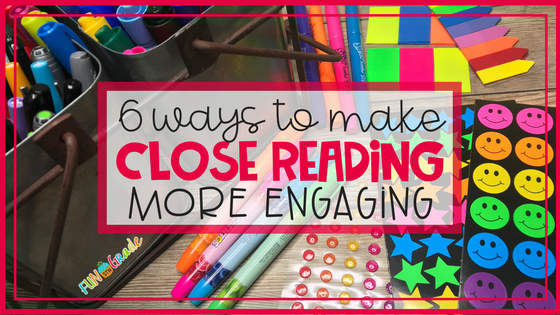
Engage Students with these Close Reading Tips
1. Fun Supplies for Close Reading
Who doesn’t like using new and fun supplies?! I know I do! Use items you already have on hand which is easy to incorporate. Or buy some fun, new close reading supplies. Either way, try to make it something they don’t use every lesson. Highlighters, markers, colored pencils, stickers, and Post-Its are some of the supplies you could use
We used highlighters to mark up the text, along with markers and colored pencils. It made the text look fun and colorful when we were done. Instead of just using text symbols, you could color-code your annotations. Sometimes, we would use markers to mark each question in a different color. Then, during one of our readings, typically the 2nd or 3rd, we would underline or color the text that helped us answer that question. Other times, we would take our Post-It tabs and mark the different parts of the text with those. The students love it!
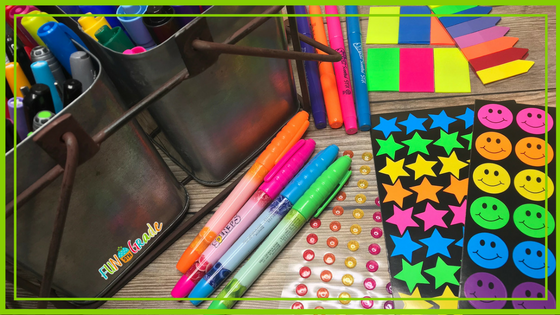
2. High-Interest Passages
Next, the passage you choose for close reading is essential. It should be a grade level or above text that challenges the students. My most successful close reading sessions were when using passages of high interest to the students. We use the passages in this Holiday Close Reads Bundle if it’s near a holiday. I also have this everyday bundle and a seasonal monthly bundle. You can see all available sets here.
These reading comprehension passages provide the perfect practice while engaging students in the text. The high-interest topics are found to be interesting by students. Many students are surprised by their learning, and the mystery picture is the icing on the cake! I’ve compiled the download below so you can try out a passage for FREE!
Choose topics that interest your students if it isn’t near a holiday. You know them and what they like or dislike. Take their interest into account when choosing a text, which will help them stay engaged throughout the close reading process. Some of the topics I’ve found that were most interesting to my students were sports, technology, candy, video games, and even passages about our bodies. Just talk to your students and figure out what they like. They will be more engaged with the text if they are interested in it. Tell me how many times you read something that doesn’t interest you. I know I definitely wouldn’t want to read it more than once.
3. Choice
Choice is sometimes such an easy way to engage students that I often forget about it. I feel I already have a good handle on what they like, but offering them a choice helps to build interest in the text. My close read sets include 3 different passages. Let them vote on which one they’d like to do or offer a choice between two that you’d like them to work on. Allow them to decide which they will work on. Let them choose whether they use highlighters, colored pencils, or markers to annotate. Allow them to choose how to show what they learned in the passage. Any little bit of choice you can offer them will increase your engagement, and they will be excited to work!
4. Make Annotating FUN!
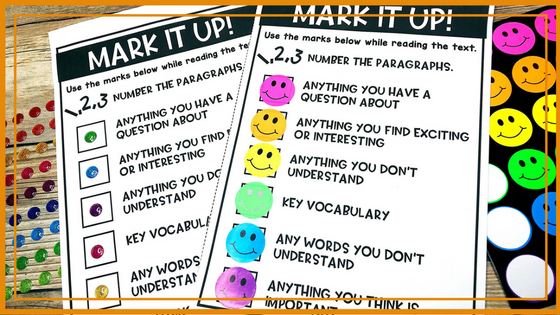
Annotating isn’t always the most engaging activity, so mix it up by allowing them to react to the text in different ways. First, start with the most basic annotation marks until they get the hang of close reading. Then, offer them other ways to annotate the text. Maybe they could put their annotations with sticky arrows or stickers to show how they relate to the text. Check out the picture below to see annotation options to use to have students interact with the text. I’ve also included them in the free download.
5. Don’t Close Read EVERY Passage
Close reading is not meant for students to do every step on every passage they read. I believe it is essential to allow them reading time where they choose the book and don’t have to do anything extra to do with it but read. I allow time for this every day. Close reading practice is important because it will help students have strategies to use when tackling the more complicated text. It will help them to understand the text better and give them options when they don’t understand what they are reading. It is not something they will do when reading for pleasure. If you do it all the time, students may get bored and develop negative feelings about reading.
6. Mystery Grid Pictures
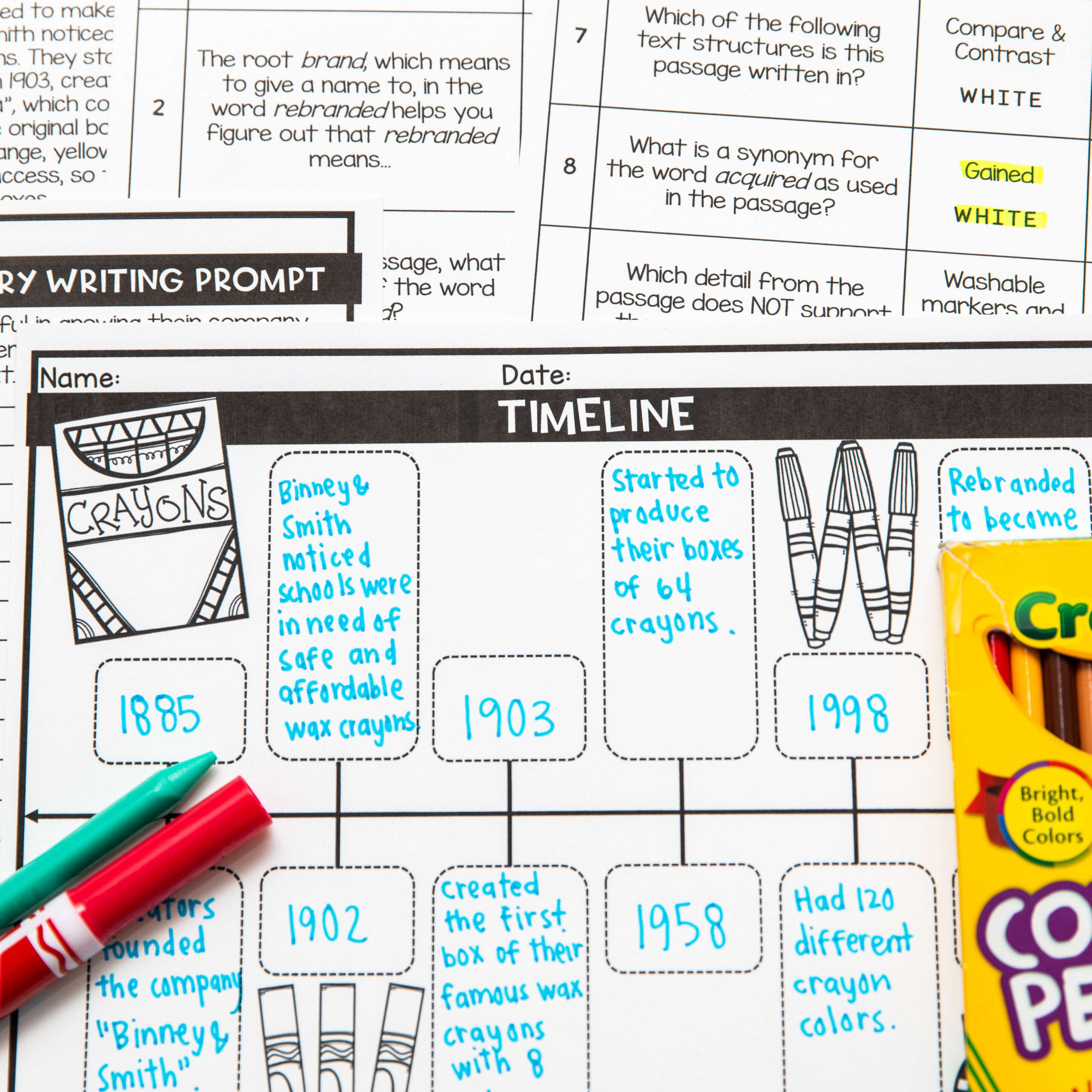
My students LOVE mystery grid pictures! They didn’t love close reading. That’s why I created high-interest passages that covered essential reading skills while incorporating mystery grid pictures to keep them engaged. My close read passages will help you tackle the difficult task of engaging students with close reading. Your students will learn new and interesting facts about the holidays. Each passage comes with a mystery grid picture for students to complete after the 2nd or 3rd read of a passage.
Features of each set of mystery grid close reads:
- Each set comes with 3 high-interest passages about the topic. There are 2 nonfiction and 1 fiction text related to the theme or topic.
- Each of the 3 texts comes in 3 different levels for you to differentiate to the needs of your students.
- Each passage comes with 10 text-dependent questions. The first five questions are more surface-level and must be answered after the first read. The second five questions dig deeper and are meant to be answered after the second read. It also includes a version for using the passages without the mystery grids if you’re short on time.
- Each passage comes with a text-dependent writing prompt for students to complete after reading the passage multiple times.
- Each passage also includes a mystery grid picture meant to be completed after the 10 text-dependent questions are answered. Students use their answers to determine how to color the grid.
- Each set includes student printables, teacher pages, and graphic organizers.
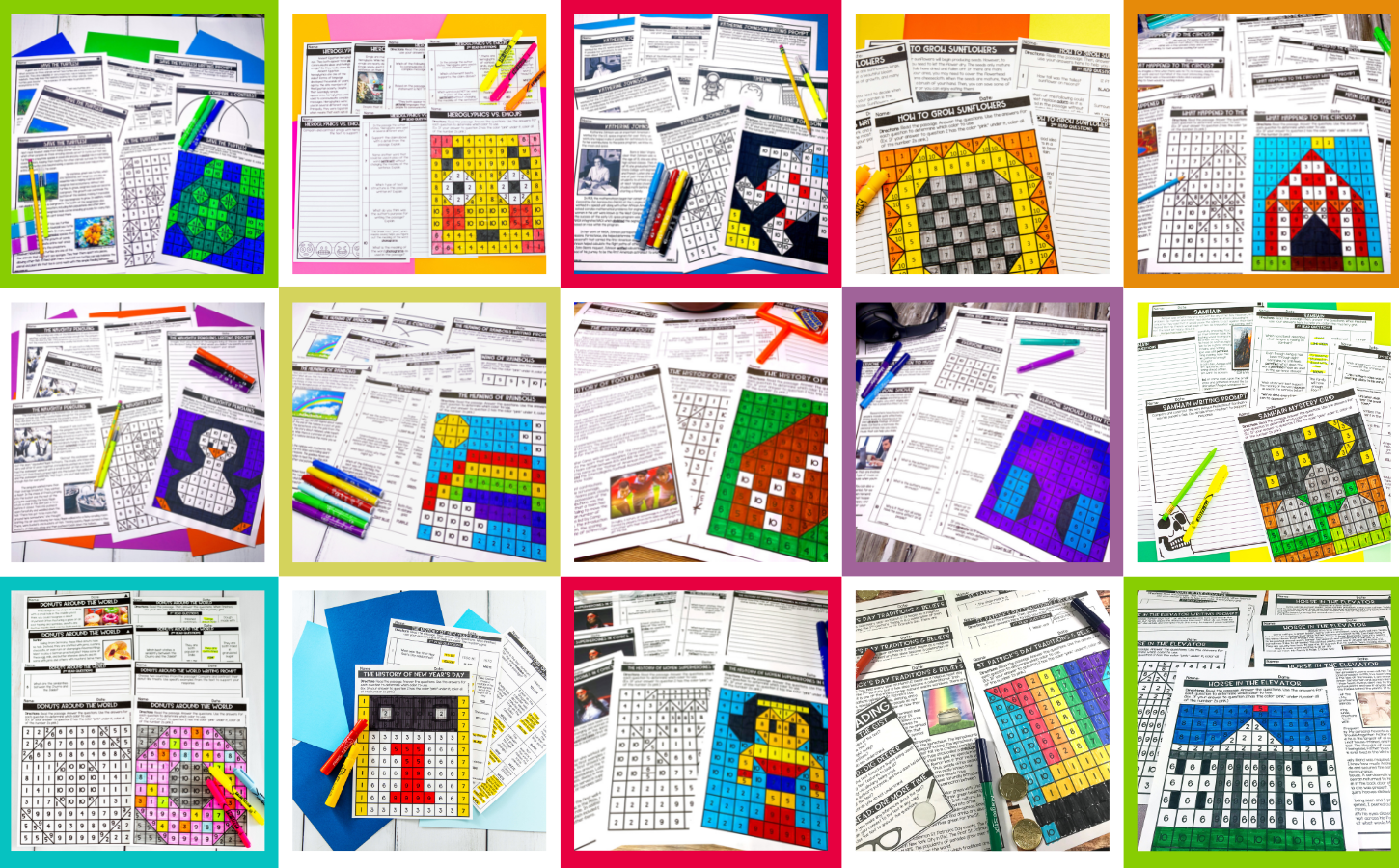
*You can check out all of the sets of Mystery Grid Close Reads available by clicking here.
